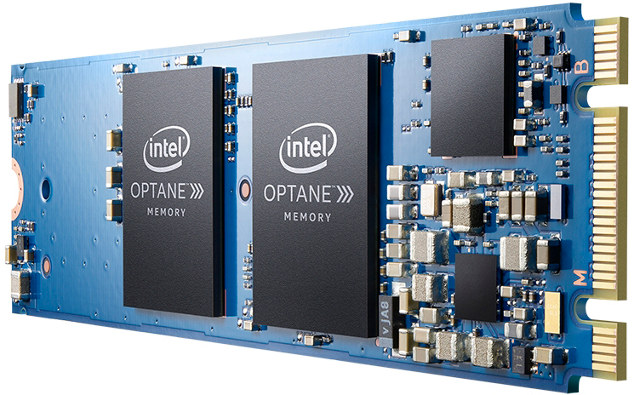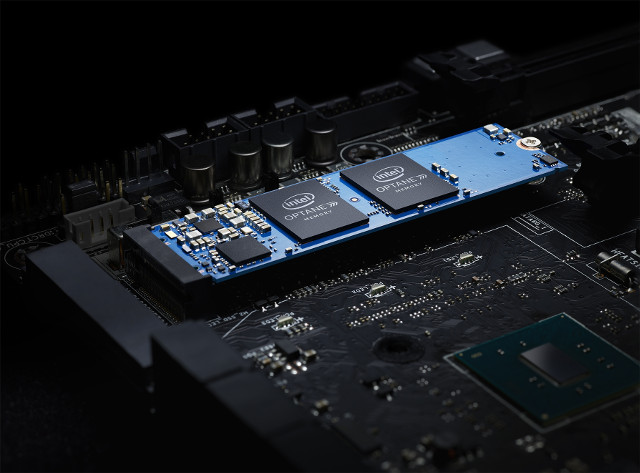Intel launched their first Optane SSD based on 3D Xpoint technology for the enterprise/datacenter market last week, and now the company has announced 16GB and 32GB consumer grade Optane memory will start selling in April starting at $44.
The cards will follow M.2 card (80mm) form factor, use a dual PCIe NVMe 3.0 interface, and currently only works with Optane compatible motherboards with 7th generation Intel Core processors. Intel promises boot times that are twice as fast, 28% better overall performance, and 65% faster game level loads thanks to vastly improved random I/O performance.
We can see some of the specs for both cards on Intel website. I reproduced some of the performance reliability data in the table below.
| 32GB Optane Memory | 16GB Optane Memory | |
|
Sequential Read (up to)
|
Up to 1350 MB/s | Up to 900 MB/s |
|
Sequential Write (up to)
|
Up to 290 MB/s | Up to 145 MB/s |
|
Random Read (8GB & 100% span)
|
Up to 240000 IOPS | Up to 190000 IOPS |
|
Random Write (8GB & 100% span)
|
Up to 65000 IOPS | Up to 35000 IOPS |
|
Latency – Read
|
9 µs | 7 µs |
|
Latency – Write
|
30 µs | 18 µs |
|
Power – Active
|
3.5 Watts | |
|
Power – Idle
|
1 Watt | |
| Endurance Rating (Lifetime Writes) | 182.5 TB | |
| Mean Time Between Failure (MTBF) | 1.6 | |
| Uncorrectable Bit Error Rate (UBER) | < 1 sector per 10^15 bits read | |
The read sequential performance looks good, but the write performance is lower than one some of cheap mini PCs I’ve reviewed in the last year. For example the 128GB FORESEE SSD inside Voyo V3 mini PC gets respectively 400 MB/s and 200 MB/s sequential read and write speed in actual benchmarks. What make Optane memories stands out are random read and write performance, as well as ultra-low latency, which explains why Intel promotes system boot time and app loading times. For example, Microsoft Outlook will launch up to nearly 6x faster, and the Chrome browser up to 5x faster.
I’m not too familiar with endurance data, and it’s really odd MTBF is expressed without unit, but if we look at an Intel 30GB consumer mSATA SSD for comparison, MTBF is expressed in hours (1.2 millions), so I guess that means the Optane memory MTBF is 1.6 millions hours, and the UBER number is less than 1 sector per 10^16 bits read, so endurance numbers are mixed, and there does not seem to be any clear advantage for the Optane memory in that respect. Power consumption of Optane memory is also much higher than the mSATA SSD I linked to (Idle: 250 mW; active: 300mW).
Intel Optane memory will start selling on April 24th for $44 for the 16GB version, and $77 for the 32GB version. You’ll be able to install the memory in one of the 130+ Intel Optane memory ready motherboards from manufacturers such as Asus, Gigabyte, MSI, ASRock and others, and in Q2 2017, several PC manufacturers will start selling computers equipped with the new 3D Xpoint memory cards. More details may be found on Optane memory product page.

Jean-Luc started CNX Software in 2010 as a part-time endeavor, before quitting his job as a software engineering manager, and starting to write daily news, and reviews full time later in 2011.
Support CNX Software! Donate via cryptocurrencies, become a Patron on Patreon, or purchase goods on Amazon or Aliexpress






